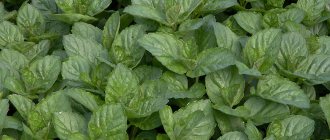Gladiolus is the most popular ornamental crop; the world assortment includes thousands of varieties. Our gardeners can choose new products created by domestic breeders, adapted to temperate climate conditions.
The magnificent, solemn gladiolus fascinates with its unusual and varied colors, graceful, simple or corrugated flowers. This is a favorite crop for cutting; gladioli are also good in a flower garden with successful companions.
Gladiolus appeared in gardens several centuries ago, but active selection began only in the 19th century. To date, the assortment has exceeded 15 thousand varieties, and dozens of new products appear every year. The abundance of varieties is due to the fact that gladiolus is easily propagated both by seeds and by vegetative means, which means it is possible to consolidate the acquired characteristics and quickly obtain planting material. Domestic scientists were actively involved in the selection of gladiolus, and the selection was not only for decorative qualities, but also for resistance to diseases and unfavorable growing conditions. Russian gladioli take root well, bloom profusely, they are unpretentious and hardy to the vicissitudes of our climate.
Nowadays, many amateurs are engaged in the selection of gladioli in our country, who have long since become professionals and even have large farms. Breeders painstakingly create new, unusually attractive varieties and actively propagate them. Many new products in recent years are available to gardeners.
Get acquainted with several new varieties; they were created in 2019-2018 and may appear in your garden in the coming season.
Principles of variety classification
The entire gladioli family can be divided according to flowering dates:
- early (p) - the appearance of inflorescences 72 days after planting;
- mid-early (medi) - inflorescences appear after 77 days;
- medium (c) - flowering after 83 days;
- mid-late (sp) - flowering after 88 days;
- late (p) - 95 days.
| Very early | Raspberry Delight Cook Robin Arina |
| Early varieties | Russian fairy tale Northern Orchid Dragon Smile Evening Star Original Cheshire Cat |
| Early middle | Black Goddess A Sip of Love Autumn Tale Moire Galaxy Blue Oceans |
| Average | Blue Bay New Engraving The Pyramid of Cheops Mermaid's Dream |
| Mid-late | Princess Frog Siren's Song Yukunkun Poplar fluff Oscar Lady Lucille |
| Late | Vinetu Magical flute Blue Topaz Jo Ann |
The variety "Spartak" has surpassed all types of its fellows in terms of early flowering.
Photo: i2.wp.com Classification by flower size:
- miniature - less than 6 cm;
- small - 6 - 9 cm;
- medium - 9 - 11 cm;
- quite large - 11 - 14 cm;
- very large - with large flowers over 14 cm.
| Miniature | Anda Seedling 110 |
| Small-flowered | Shrek Zeltaina Jurmala Fantastic Rebecca Hummingbird Zest |
| Medium flowered | Blooming Summer Magnificent century Fairy Pranks Midshipman Pearl Spyro |
| Large-flowered | Galaxy blue bay Creation of Autumn New Engraving Black Crow |
| Gigantic | Red Planet Goliath Magic of Color Lacemaker Congo Sky Giant |
The photo shows orange tricolor terry gladioli of the “Noble Manor” variety.
Photo: img.7dach.ru According to the shape of the petal:
| Not corrugated | Zlatous Emir Timur South Khakassia Terracotta |
| Corrugated | Cardinal's Robe Evening Star Sovrin Nugget Painted Watercolor |
| Heavily corrugated | New engraving Emerald Rhapsody Winter Sunset Melancholy Groundhog Day |
| Super highly corrugated | Blizzard of August Lilac Ball Carved Patterns Grand Duchess |
Growing
Basic principles
There are several growing recommendations for this crop, following which you can achieve good results without losing the quality of the material.
Planting bulbs
- It is recommended to grow gladioli in one place for no more than two years. In the third year, the plant must be planted in another place. In the place where gladioli used to grow, it is recommended to plant some kind of legume ornamental crop: lupins or mimosa.
- It is advisable to replant gladioli in soil different from the one where they grew previously. For example, if they grew on sandstone, it is recommended to replant them in alumina.
- It is advisable to use those varieties of gladioli that are adapted to the climate of your area.
- The principle of planting bulbs of the same size is important. If you use bulbs of different sizes, then plants grown from large bulbs will suppress those that grew from small ones.
- If the soil is light, the bulbs are planted to a depth of 3-5 cm, if the soil is heavy - 10-12 cm.
An example of planting gladioli in beds
- It is recommended that small or “daughter” bulbs be completely peeled before planting; in addition, in the first month they need abundant watering.
- Late varieties should not be planted in shade or partial shade, since there may not be enough sunlight for them to ensure budding and flowering.
- To avoid fungal damage to gladiolus, it is recommended to grow them in ventilated areas.
- Gladioli growing in sandy soils require so-called “foliar feeding,” when their leaves are sprayed with a solution of fertilizer in water.
- In summer, especially during hot periods, gladioli require abundant watering once every 5-7 days; In addition, every evening it is necessary to do a little watering (so that the water penetrates 2-3 cm) and loosen the soil.
- Do not be negligent in collecting and storing bulbs in the winter. Unlike, for example, tulips, gladioli bulbs are especially sensitive to changes in temperature and humidity during storage.
Preparing for landing
A month before planting, gladioli bulbs are cleared of scales; you should be careful not to damage the sprouts. All diseased or damaged bulbs are discarded. Sometimes you can leave especially large bulbs by cutting out damaged or disease-affected areas and treating the cut area with brilliant green.
Sprouted gladioli bulbs
After this, it is necessary to lay out the seed in one layer so that the sprouts are located on top. The box with the bulbs is placed in a warm, well-lit place to allow the sprouts to sprout a little. When the length of the shoot becomes 1-2 cm, the bulbs must be disinfected.
Disinfection is carried out using a 0.3% solution of potassium permanganate in water by immersing the bulbs in it for 30-60 minutes. As an antiseptic, you can use a solution of 0.5% foundationazole.
Gladioli babies
Children of gladioli can also be prepared for planting. Typically, the size of the babies that can be planted is from 7 to 10 mm. They are also peeled and placed in sunlight to germinate. However, children need to be disinfected much longer – from 8 to 10 hours.
Site selection
Gladioli are photophilous, so they need sunny areas, well ventilated and drained. The groundwater level should be low. For early flowering varieties, even partial shading is unacceptable. The site can be horizontal, however, the optimal one would be a southern slope with a slope of about 5-7°.
An important role in the agricultural technology of gladioli is played by the acidity of the soil in which they will grow. Slightly acidic soil is best suited for them, since high acidity causes the plant to die off the tips of its leaves and inhibit the formation of buds. In particularly unpleasant cases, flowering on such soils may not occur at all.
Gladioli in the wild
Excessively alkaline soil means that the plant cannot absorb microelements, especially iron, which leads to a decrease in chlorophyll synthesis in the leaves and they begin to change their color from green to yellow.
Methods for correcting soil acidity are standard: acidic soils are treated with dolomite flour, lime or charcoal ash; the required application rates range from 150 to 250 g per 1 square meter. m. Alkaline soils are diluted with peat; you need relatively little of it, from 100 to 150 g per 1 square meter. m.
Naturally, if it is possible to plant a plant on black soil, it would be optimal to do just that. In the absence of chernozem, the best soils for gladioli are considered to be light loams or sandy loams. It is quite simple to obtain such soils: either sand is added to the loam, or clay mixed with compost or humus is added to the sandstones.
Sloping area for gladioli with bulbs ready for planting
After which the area for gladioli is carefully dug up. It is best to carry out these procedures 2-3 weeks before planting the bulbs in open ground. Within a week after digging, the soil will acquire a loose structure; You can check this by trying to loosen it.
If the soil is not loose enough, it is necessary to add about a third of the component (sand to loam or clay with compost to sand) added before to correct it. Good predecessors (and successors too) for gladioli are both decorative and forage legumes.
Gladioli cannot be planted after asters, nightshades or cruciferous plants.
If planting gladioli is planned in the fall, it is recommended to apply mineral fertilizers to the site before the winter period. These should be increased doses of phosphates (up to 100 g per 1 sq. m) and potassium compounds (up to 50 g per 1 sq. m). After this, the area must be carefully dug up.
But in the spring, immediately after the snow melts, potassium fertilizers are applied again in the same concentration. In this case, it is better to add potassium chloride in the fall, and its sulfide in the spring.
Planting bulbs
The optimal time for planting bulbs and children in open ground is only two decades: the last in April and the first in May. However, this instruction should not be taken literally. Much depends on the flowering time of the plant being planted, on the climate and weather conditions during the spring.
Over-sprouted gladioli bulbs. It's better not to let this happen
Large bulbs are planted at a depth of 10 to 15 cm, small ones 5-10 cm. Depending on the severity of the soil and its density, these values can be slightly adjusted (the heavier the soil, the deeper the planting is carried out). The distances between the bulbs are 12-15 cm for large ones, 7-8 cm for small ones.
If several rows are planted, the distance between them should be from 20 to 30 cm, otherwise the plants will be crowded and have problems with lighting.
Planting gladioli corms
Landing is carried out as follows:
- a furrow is made 3-5 cm deeper than the required planting depth
- a “lining” of river sand or sphagnum with a thickness of 3 to 5 cm is placed at the bottom of the furrow
- The bulbs are installed on this “gasket” (stem up)
- the bulbs are dug in and watered
Plant care
Caring for gladioli requires not so much knowledge of some special techniques and mastery of some techniques, but rather thoroughness and meticulousness in the implementation of standard procedures. Once the shoots reach a height of 10-12 cm, it is necessary to mulch the shoots with humus or compost with a thickness of 3 to 5 cm. This will help protect the corms from overheating and give them the opportunity to accumulate moisture when watering.
Yellow and pink gladioli
Watering is carried out in the morning or evening, when the Sun is already low above the horizon. The frequency of watering is once every 5-7 days. If there was natural precipitation, the watering time can be shifted by 2-3 days. There should be a lot of water when watering: from 10 to 15 liters per 1 square meter. m.
It is best to make inter-row holes of shallow depth before watering, into which you carefully pour water using a watering can without a diffuser. In this case, you should avoid getting moisture on the leaves of the plant.
Field of gladioli
After watering, the soil is loosened to a depth of 5-7 cm. This is done so that a crust does not form on the top layer of soil. Loosening the soil must be done once every 7-10 days, regardless of watering and natural precipitation. If the weather is hot, the frequency of watering can be reduced to 4 days, but the amount of water should remain the same (10-15 liters per sq. m).
As soon as the first buds appear on the stems, it is advisable to tie them to pegs. It is best to use plastic or metal pegs to avoid fungus from getting into the wooden ones. If you don’t have such pegs at hand, you can use wooden ones, after treating them with fungicides.
Garter of gladioli
Gladioli need weeding once every 20-25 days. Weeds must be removed daily. You should also pay attention to pests, primarily slugs.
Their presence in the area can be recognized by the traces of mucus left by the mollusks. You need to find the slug nest and destroy it.
Feeding
Delicate pink gladioli
These procedures are very important for gladioli; we can safely say that they are critical for these plants. In total, the flower growing cycle includes six feedings.
Let's look at them:
- First. It is carried out when the plant has two leaves. It is carried out with two fertilizers: nitrogenous (urea, ammonium nitrate) and potassium (sulfate or saltpeter) in the amount of 25 g of each per 10 liters of water. An area of 1 square meter is watered with this water. m.
- Second. Produced when the number of leaves is 3 or 4. The substances are the same, but their quantity is already 30 g; dissolves in 10 liters of water and pours 1 sq. m. At the same time, foliar feeding is carried out (fertilizers are applied to the leaves), purchased, as a rule, in flower shops. It is necessary to strictly adhere to the instructions for their concentration and the correct method of application.
Also, during the second feeding, boric acid should be added (2-3 g per 10 liters of water, water 1 sq. m of planting).
- Third. When 5-6 leaves appear. Urea (15-20 g) and potassium sulfate (25-30 g) per 10 liters of water.
- Fourth. Just before flowering begins. Requires 25-30 g of nitroammophos per 10 liters of water.
- Fifth. Immediately after flowering ends. 15-20 g of superphosphate and 20-30 g of potassium sulfate per 10 liters of water.
- Sixth. Produced in early September. But this is no longer feeding, but rather a preventive disinfection procedure. Dissolve 3-5 g of potassium permanganate in 10 liters of water and pour this volume over a standard 1 square meter. m landing.
After this procedure, feeding the plants stops.
You can fertilize without dissolving fertilizers in water. In this case, fertilizers are evenly applied to the soil before watering and dissolved in it during the watering process. In this case, the watering rate must be increased to avoid burning the tubers and roots of the plant with a high concentration of fertilizers.
Mineral fertilizers on the soil layer
It would not be superfluous to add organic fertilizers during flowering. To do this, bird droppings or mullein are diluted in water (no more than 50 g per 10 liters of water). You cannot use manure (even dissolved) for gladioli.
Cutting gladioli for bouquets
Ready-made bouquet of gladioli
Produced in the morning or evening. In this case, the “stump” of the peduncle should be as short as possible, that is, cutting is done almost along the line of contact between the stem and leaf of the plant. It should be remembered that by the time the stem is cut, the gladiolus must have at least 4-5 healthy leaves, since they must provide the corm with the necessary amount of nutrients before the start of the winter period.
Digging up gladioli bulbs and storing them
For the winter, the bulbs must be dug up so that they do not freeze in the winter. Typically, this procedure is performed 5-7 weeks after flowering ends. Digging begins with early ripening varieties and ends with the latest ones.
In addition, large bulbs are dug up first. Last comes the turn of the smallest bulbs and children. If everything was in order with the plant during the summer period, the bulbs will be covered with a sufficient number of dense integumentary scales.
Sometimes “test” digging of bulbs is carried out to make sure that the plants do not have massive diseases and pests . If it turns out that most of the pre-dug root bulbs have common signs of damage, you need to urgently dig up absolutely all the bulbs in order to have time to take measures to save them. It’s better to be left without flowers for one year than to destroy the seed fund that has been collected for years.
Dug up gladioli bulbs with babies
After digging out the corms, the stems and roots are cut off with pruning shears, and the children are separated. Next, the bulbs are divided into varieties; Each variety is placed in a separate box with a perforated bottom, where they are washed under running water. Then the bulbs are treated for half an hour with potassium permanganate or foundationazole, washed again and dried.
Dried bulbs are placed in special storage boxes covered with paper (not newspaper). They are stored this way, turning them from side to side once a week; storage is carried out at a temperature of 25-30°C.
After two weeks, the temperature is reduced to 18-20°C. Drying lasts approximately one month, after which the bulbs are sorted and cleaned.
Gladioli must have a dormant period lasting up to 1.5 months, during which they do not germinate under any conditions. But, after this period, they can begin to germinate. To avoid this, it is necessary to create storage conditions under which this would be impossible.
Bulbs should be stored at a temperature of 5 to 10°C in a room with a humidity of no more than 70%. For better storage, you can put a few cloves of garlic in the boxes with the bulbs. Once a month, the bulbs are inspected, spoiled ones are rejected and the garlic is renewed.
The best storage location is a moderately cold basement with the possibility of ventilation and ventilation. It is best to store bulbs in wooden or plastic boxes with a perforated bottom.
Gladiolus bulbs in storage
You can also use a refrigerator as a storage facility for bulbs, if its volume and ability to maintain the required temperature allows. In this case, the bulbs should be in sealed containers and each of them should be wrapped in paper.
In February, you need to start inspecting the bulbs every 10 days and changing the paper as it becomes moist. This is due to the fact that the bulbs begin to secrete water before waking up. Once this process has begun, it is necessary to reduce the storage temperature by 1-2°C.
You can also store the bulbs on a glazed balcony or loggia, covering the boxes with them with a blanket, but you need to monitor the temperature.
My favorite varieties
Red gladioli "Congo"
| |
Black gladiolus "Ebony Beauty"
| |
Blue gladioli varieties “Day and Night”
|
General information about gladioli
Gladioli have one interesting feature: their old varieties are gradually disappearing, and new ones are taking their place. The average “lifetime” of one variety or another is about 10 years. This situation is explained by the fact that domesticated species of gladioli reproduce much more vegetatively, in which there is no exchange of genes.
Growing new generations of gladioli from tuber shoots is essentially cloning similar plants. At the same time, errors accumulate in their DNA from generation to generation. This does not and cannot happen in the wild, since almost all types of “wild” gladioli reproduce by seed.
Gladiolus variety "Grass-ant"
That is why they try to propagate the most attractive plant varieties from time to time (or even every season) in “home” conditions by seed, providing the maximum possible number of combinations of plants of the same variety.
Nevertheless, despite such a serious problem in reproduction, gladioli have long entered our lives and have firmly taken their place in a number of those flowers that coincide with something. Like asters, gladioli are, first of all, a symbol of the new school year. It is these two types of plants that representatives of the younger generations most often bring to schools.
Bouquet of gladioli
But the matter does not stop there. Given the long and strong stems of gladiolus, it is used as the basis of bouquets. The plant can be grown year-round in greenhouse conditions, both with and without forcing.
Gladioli are perennial plants of the Iris family. They are able to form corms of various colors, covered with scales, which are used to reproduce them. In the wild, gladioli bulbs are small in size and practically do not participate in reproduction.
Inflorescence of pink gladiolus variety Prague
The plant has straight single stems that do not branch. The height of the stems can vary widely - from 30 to 200 cm. The leaves are long and thin, similar to swords; their length can reach 80 cm. The color of the leaves is light green. The leaf envelops the stem, giving the latter additional strength.
Gladiolus flowers are collected in inflorescences. The inflorescences are varied in their structure; they are:
- unilateral
- bilateral
- in the form of an ear
- swirled
The length of the inflorescence, depending on the variety, can be from 50 to 90 cm. As a rule, flowers consist of 6 petals that grow together at the base. The plant is also easily propagated by seeds. Their fruits are brown round or oval shaped boxes.
Gladioli bloom for about a month; flowering time ranges from early August to late September.











